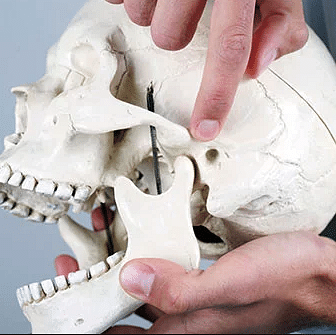For appointments, call (225) 292-6991. Serving Baton Rouge, Gonzales, Denham Springs, and New Roads

Signs and Symptoms of TMJ Disorder
The temporomandibular joint (commonly referred to as TMJ) acts as a sliding hinge to connect the skull to the jawbone. TMJ disorder, which is a form of TMD (temporomandibular disorder), can cause severe pain to the jaw joint as well as in the muscles that control the movement of the jaw. The exact cause of a patient’s TMJ disorder can be difficult to establish. The pain may be triggered by a combination of factors such as injury to the jaw, arthritis, or genetics.
Here are the most common signs and symptoms of TMJ disorder:
Pain
Pain in the masticatory and related muscles is one of the most common signs of TMJ. The patient may feel this pain at any time, even when there is no jaw activity. The intensity of the pain can be mild to severe. The pain can be momentary or persistent. Some patients may experience multiple pain episodes over days, weeks, or months, depending on the severity of the disorder.
TMJ sounds
Some patients may experience popping, clicking, and crepitus (that crunching sound you hear when walking on a wet sand) sounds when moving their condyle. These signs alone may not necessitate TMD treatment. These sounds can be triggered by variations in the physical features of the joint. You can also experience them when the articular disc is displaced.
Opening limitation and deviation
Difficulty opening the jaw without feeling pain is a common symptom of TMJ. This can be attributed to muscle strain or hyperactivity that prevents the patient from opening their mouth to the normal distance. An opening limitation is often attributed to the displacement of the articular disc, as well as muscle tension. In such cases, the patient will generally exhibit a deviation in response to stress from the pain.
TMJ locking or catching
The patient may experience locking or catching within the TMJ. This is often as a result of interference with the smooth movement of the condylar, which may vary from a momentary catch to a continuous lock. About 20% of TMJ patients report at least one locking episode.
The signs and symptoms associated with TMJ are often temporary and can be relieved with self-managed care. However, patients with severe TMJ may opt for surgical procedures to correct the condition and relieve the pain.
